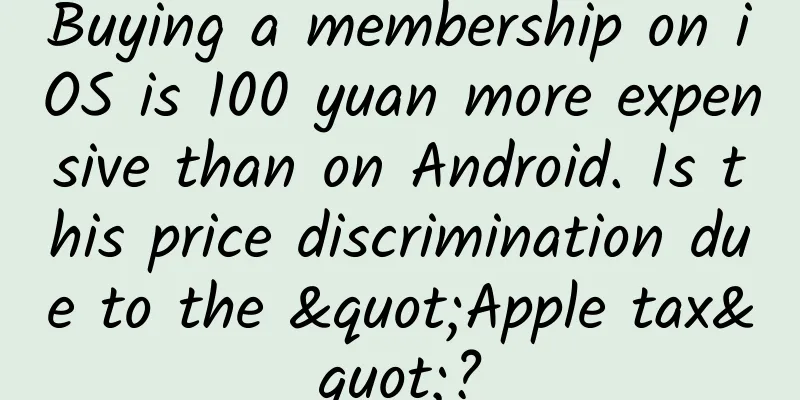|
The fierce competition in the domestic mobile phone market is intensifying. In the middle of 2015, various companies launched new flagship products and press conferences were held one after another. July and August almost became the busiest year for the domestic mobile phone market.
The battle in the mobile phone industry is fierce, and the data from various independent analysis and consulting agencies are about to be released. According to the latest data from Canalys, Apple's sales in China in the second quarter fell from first to third, while domestic mobile phones performed brilliantly. Xiaomi ranked first with a market share of 15.9%, followed by Huawei with 15.7%, and Samsung and vivo ranked fourth and fifth respectively. The data from Counterpoint Research confirmed most of Canalys' conclusions. The top five seats in the domestic market are Xiaomi (15.8%), Huawei (15.4%), Apple (12.2%), vivo (8.1%), and Samsung ranked fifth.
As competition in the smartphone market intensifies, the balance of power among the giants has also changed subtly. The domestic mobile phone market has never been so stalemate. However, vicious competition in the domestic mobile phone industry is frequent, and differentiation is coming behind the stalemate.
High-end market: International giants are weak, domestic mobile phones are coveting
The high-end market has always been a forbidden zone controlled by international giants. Domestic mobile phones used to compete in the 2,000 yuan price range, and were almost unable to compete in the high-end market above 3,000 yuan. However, in the domestic mobile phone market in 2015, international giants represented by Samsung and HTC showed a weak trend, while Xiaomi, Huawei, ZTE and other manufacturers have tried the 3,000 yuan market, exploring the way for domestic mobile phones to enter the high-end market.
There are many factors that make domestic mobile phones covet the high-end market. The two analysis companies mentioned above said that Apple's dual flagship iPhone 6 and iPhone 6 Plus have been on the market for a long time, and their appeal is gradually declining in the competition that has lasted for nearly a year. Samsung's flagship phones S6 and S6 Edge, which are highly anticipated, are facing a situation of prosperity first and then decline. Nikkei reported on July 14 that the head of a Japanese electronics manufacturer said that the sales of Samsung Electronics' flagship phone S6, a major customer, were sluggish. Although the initial orders were hot, the subsequent order volume has shrunk rapidly to below the original estimate. On July 30, Samsung said that the mobile phone department is facing severe challenges and is preparing to "adjust" the price to "maintain" the sales momentum of the two models.
HTC, which shares the same fate as Samsung, has also experienced a painful drop in the price of its flagship phones. HTC's recent situation can be described as "dire straits", with its market value shrinking continuously. The sales of its flagship phone HTC One M9 are disappointing, and there are still millions of units in stock. In order to improve its financial situation, HTC One M9 has dropped by 1,000 yuan.
In contrast to the weakness of international giants, domestic manufacturers are frequently testing the waters in the high-end market. In order to increase brand premium and solve the problem of profitability, Huawei, ZTE and Xiaomi all launched their own flagship phones priced at 3,000 yuan in 2015. Xiaomi embraced the mid-to-high-end market at the beginning of this year and changed its image of being a loser by launching the Xiaomi Note. Huawei moved the P8 launch conference to London, and ZTE launched the Axon in the United States in July this year and then exported it to domestic sales, moving the launch conference back to China. However, it must be noted that domestic high-end phones have not been able to seize the market lost by Samsung and HTC. Most of this market is occupied by Apple. The journey of domestic mobile phones to the high-end is still a long way to go.
Low-end market: Xiaomi and Honor dominate, Meizu and Dashen rise
Since the beginning of this year, many domestic mobile phone manufacturers have been focusing on the thousand-yuan phone market. While competition has become increasingly fierce, excellent cost-effectiveness and design have become the market leaders. Under this general trend, the domestic low-end mobile phone market still presents a situation where Xiaomi and Honor dominate, while brands such as Meizu and Dasheng are flourishing.
According to Counterpoint data, Xiaomi regained its pole position in the second quarter of 2015 with two successful moves. The Xiaomi Note and the new 599 yuan Redmi 2 were the two best-selling devices in the quarter. At the same time, the Honor series' low-end Honor 4A, Honor 4C and Honor 4X formed a product matrix, consolidating its advantage in the thousand-yuan phone market.
It is worth noting that Meizu and Dasheng have also achieved great success in the low-end market. Meizu's thousand-yuan phone has become another choice in the low-end market with its good appearance design. Meizu's low-end phone Meilan Note2 released this year has sold more than 1.2 million units in a single month, and the sales of Meilan phones have exceeded 5 million in 5 months. After 360 took control of Dasheng, Zhou Hongyi gradually determined Dasheng's low-end strategy. Dasheng F1 was reduced in price by 399 yuan, and Dasheng Note3, which costs only a thousand yuan, has fingerprint recognition. Both low-end phones have also brought an impact on the market.
Domestic extreme phones have taken the concept of "cost-effectiveness" to the extreme. The original thousand-yuan phone market is moving down to the hundred-yuan phone market. Although consumers enjoy price discounts, the profit margins of various products are being compressed, and even losing money to gain publicity, which greatly restricts the long-term development of enterprises. Take the Dashen F1 as an example. The price of 399 yuan is even 50 yuan lower than the cost price. In such a harsh competitive environment, domestic low-end phones are encountering the vicious circle of "high volume but no profit".
Mid-range market: Companies continue to lose ground, pushing down the price red line
The 1,000-yuan phone market is moving down to the 100-yuan phone market, and this situation has also spread to the 2,000-yuan price range that all companies have tacitly adhered to. In April this year, the 2,000-yuan price range of domestic mobile phones showed signs of loosening, with Meizu taking the lead in price cuts. The prices of mid-range phones from Xiaomi, Honor, OnePlus, etc. have all dropped to around 1,500 yuan, leading to a collective dive in the domestic mid-range phone market.
The impact of the loosening of the mid-range market can be seen in the "scalper" group. A senior "scalper" revealed to the author that this year is different from the past. The days of easily earning 10,000 yuan a month are gone forever. In the past, Xiaomi could make a lot of money, but now Xiaomi, Honor, and Meizu are running neck and neck, but the situation of declining income has not changed. The biggest reason for this is that the 2,000 yuan price range has dropped to 1,500 yuan.
The scalper even said that the price reduction speed this year exceeded expectations, and the original price reduction cycle was advanced by about 4 months. Some friends in the circle misjudged the price reduction cycle and hoarded a large number of mid-range phones such as Mi 4, Meizu MX4, and Honor 6, which resulted in a loss of all their money. Now they can only sell them at low prices. "The Xiaomi 4 sold at 1,299 yuan on No. 1 Store some time ago was a stock phone released by the scalper channel." He basically does not touch mid-range models at present. The orders in his hands are basically popular thousand-yuan phones. Although the profit is not high, "the risk is relatively small and the income is guaranteed regardless of drought or flood."
Industry insiders generally believe that the price drop in the mid-range market is largely due to the market chain reaction caused by LeTV's super phone pricing strategy. This view is generally recognized by the "scalpers" group.
Ecosystem becomes a gimmick, price competition intensifies vicious cycle
In April this year, LeTV announced the price of its mobile phone BOM (bill of materials) under the banner of "making users smarter and more rational, and not paying a premium for hardware." This practice was widely criticized by the industry as "unruly and undermining the market."
Lenovo Group CEO Yang Yuanqing even hinted on Weibo that competition in China's smartphone market is very fierce, and some manufacturers are intensifying the competition. "Some competitors are playing irrational games, publishing their supply lists to compete in the market. These irrational practices are actually making competition more intense." Although Yang Yuanqing did not name any names, LeEco, a new entrant in the Chinese mobile phone market, is the first manufacturer to publish the BOM (bill of materials) price of its mobile phones.
Companies like LeEco that sell mobile phones at cost prices are almost all "capitalizing in the name of ecology". The so-called "profiting by ecology" is actually just a gimmick, and more of it is to disrupt the mobile phone market by low prices. This "Zhou Yu fighting Huang Gai" model is understandable, but this approach will make domestic mobile phones stay in the quagmire of price wars for a long time, lacking the value drive of brand premium. In the long run, domestic manufacturers will greatly weaken their enthusiasm for innovation.
Before LeEco, Xiaomi was also a company that advocated "ecological profit". Xiaomi once attempted to build the MIUI ecological chain and make profits through books, applications, wallpapers, theme stores, game centers, and cloud storage services. However, starting from the middle of last year, Xiaomi gradually gave up the so-called MIUI ecology and turned more to ecological chain hardware startups to seek new profit points.
In this year of stalemate, how do domestic manufacturers respond?
Although the domestic mobile phone market is in a stalemate, the overall market structure shows that it has entered a recession. Relevant data shows that in 2014, China's smartphone shipments reached 389 million units, down 8.2% from 423 million units in 2013.
Apple and Samsung monopolize the high-end market, Huawei and Xiaomi compete for supremacy, and leading manufacturers such as LeTV, OnePlus, and Hammer have joined the battle. As the market size shrinks, there are more and more players. With more wolves and less meat, how to divide the cake has become the biggest problem facing all companies.
Faced with market changes, each company is differentiating, and ecological transformation, channel transformation, and overseas expansion have become common practices. Xiaomi's ecological chain enterprises have become a channel for business expansion to make up for profits. Meizu also seeks ecological layout after Alibaba's investment; Huawei and ZTE are going further and further on the road of entering the high-end market and improving brand premium; LeTV and Qiku, as new manufacturers, have joined hands with Coolpad to seek channel cooperation; OnePlus, vivo, and OPPO are entering overseas markets, achieving the goal of blooming inside and outside the walls.
The domestic mobile phone market is divided, and although the response strategies of various companies are different, it is foreseeable that the sprinters in the domestic mobile phone market will not have the last laugh, and the correct way is to take small steps and run fast. In this great change, the winner is not the king, but the survivor is the king.
As a winner of Toutiao's Qingyun Plan and Baijiahao's Bai+ Plan, the 2019 Baidu Digital Author of the Year, the Baijiahao's Most Popular Author in the Technology Field, the 2019 Sogou Technology and Culture Author, and the 2021 Baijiahao Quarterly Influential Creator, he has won many awards, including the 2013 Sohu Best Industry Media Person, the 2015 China New Media Entrepreneurship Competition Beijing Third Place, the 2015 Guangmang Experience Award, the 2015 China New Media Entrepreneurship Competition Finals Third Place, and the 2018 Baidu Dynamic Annual Powerful Celebrity. |










